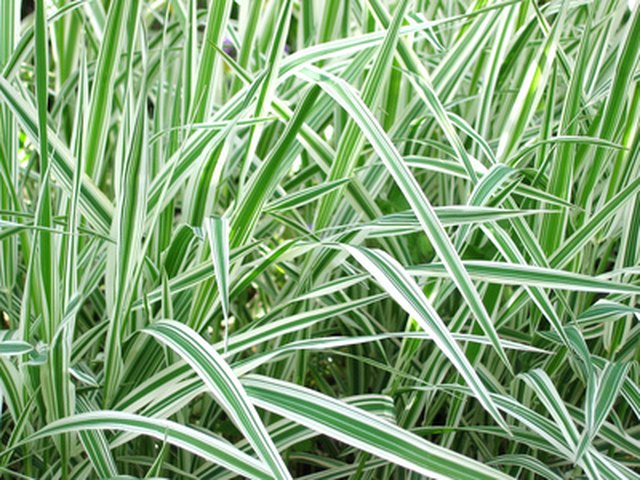Green and white grass plants are a beautiful and versatile choice for gardens. With their eye-catching striped foliage these ornamental grasses add vibrant style, texture, and movement to garden beds and borders. I’ll walk you through the top options for green and white grasses and provide tips for choosing the best varieties and caring for these showy plants.
What are Green and White Grass Plants?
Green and white grass plants belong to a group known as variegated ornamental grasses. They have long, slender green leaves striped or edged with white, cream, or yellow. This color contrast makes them stand out.
Unlike turf grasses, ornamental grasses are grown for their decorative value rather than as a lawn They come in a wide range of heights, shapes, and colors. Variegated varieties add a bold, graphic punch to gardens with their bicolor leaves
These grasses are perennials, meaning they persist for many years. Some popular green and white varieties include:
- Variegated ribbon grass
- Japanese forest grass
- Variegated maiden grass
- Zebra grass
While largely grown for foliage, some may produce plumes or panicles of flowers or seed heads that provide secondary interest. Their flowers are typically airy and less showy than their leaves.
Why Grow Green and White Ornamental Grasses?
There are many great reasons to consider adding green and white grasses to your landscape:
Unique beauty: The striped or margined foliage offers something different and eye-catching. These grasses stand out from the crowd.
Versatile: They work in many garden situations from perennial borders to pond margins and look fantastic in containers.
Movement: Their slender leaves sway gracefully in the breeze, adding animated texture.
Year-round presence: Most keep their foliage into winter, providing structure and color.
Low maintenance: Once established, they require little care and no deadheading. Just cut back once a year.
Deer resistant: Deer and rabbits tend to leave these grasses alone. A bonus for gardens plagued by these critters.
Easy propagation: Established clumps can be divided to make more plants.
Choosing the Best Green and White Grasses
With dozens of variegated grass varieties to pick from, here are top options to consider:
Variegated Ribbon Grass
This fast-spreading grass has bright green leaves striped in creamy white. It grows 1-3 feet tall and does well in sun or part shade. ‘Feesey’ is less invasive than the species. Use ribbon grass with care as it can be aggressive. Works nicely around ponds.
Japanese Forest Grass
A graceful, mounding grass with thin green and white striped foliage. Grows 18-24 inches tall. Its compact habit makes it a great border plant or groundcover. Tolerates shade. Try varieties like ‘Albostriatus’ and ‘Morning Light’.
Variegated Maiden Grass
A big, bold grass with broad leaves striped in white. ‘Silberfeder’ is a popular cultivar, growing 4-6 feet tall with metallic-looking foliage. Provides excellent texture and height. Best for full sun locations.
Zebra Grass
Dramatic, vase-shaped grass with horizontal yellow bands across the leaves. ‘Zebrinus’ is a classic cultivar that grows 3-5 feet tall. Makes a striking specimen plant. Does well in sun and tolerates some drought once established.
Consider the mature size of grass plants and allow enough room for them to grow. Most variegated grasses prefer full sun for best color but also tolerate part shade. Well-drained soil is ideal. Container planting can help keep aggressive spreaders in check.
Caring for Green and White Ornamental Grasses
Variegated grasses are relatively easy care once established. Here are tips for success:
Location: Choose a spot that offers full sun to part shade. Variegated leaves tend to fade in too much shade.
Soil: Well-drained soil enriched with compost is ideal. Most will tolerate average soil.
Water: Water regularly after planting, then reduce to weekly watering once established unless rainfall is inadequate.
Fertilizer: Apply a balanced fertilizer in spring. No fertilization is needed the rest of the year.
Pruning: Cut back stalks and foliage to 6 inches in late winter before new growth emerges. Remove dead blades anytime.
Division: Divide congested clumps every 2-3 years in spring to rejuvenate. Replant divisions or give away.
Hardiness: Check plant tags for hardy zones. Most tolerate winter cold but may go dormant in summer heat.
Problems: Variegated grasses are pest and disease resistant. Leaf scorch can occur in too much sun.
Striking and Low-Maintenance Additions
Green and white grasses deserve a spot in gardens for their vivid striped foliage and graceful movement. They thrive with minimal care and provide long-lasting color. Blend them into beds and borders or showcase them in containers.
Once established, these hardy grasses are drought and pest tolerant. Their fine-textured leaves stand out against broader-leaved plants and add lightness. Sizes range from petite groundcovers to big, bold specimens.
If you love ornamental grasses or simply want to add colorful flair to your garden, go for variegated varieties. Green and white grasses are sure to draw attention while being easy to grow. Just beware of their potential to spread and site them carefully. With the right selection and location, you’ll enjoy their bright stripes for many years.
10 Perennial Grasses I Absolutely Love! // Garden Answer
FAQ
What is the green and white grass like plant?
Is variegated ribbon grass invasive?
How to take care of ribbon grass?
What plant looks like grass with a white stripe?
- The Ultimate Guide to Growing Strawberries in Raised Beds - August 8, 2025
- No-Dig Garden Beds: The Easiest Way to Grow a Beautiful Garden - August 6, 2025
- How to Protect and Preserve Wood for Raised Garden Beds - August 6, 2025

